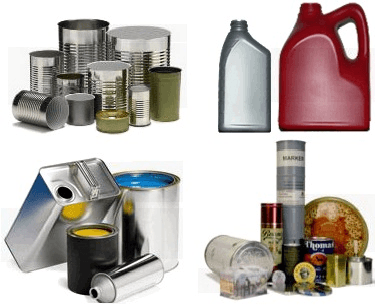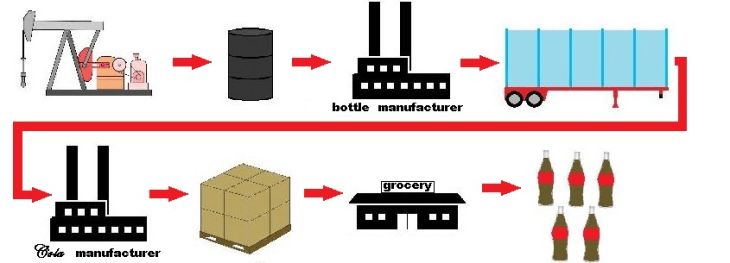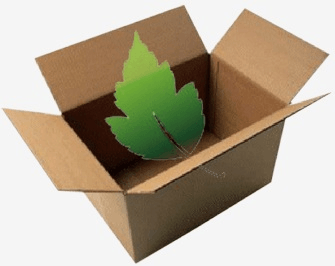Packaging Containers Information
 Packaging containers is a general term which refers to many types of parcels, envelopes, and structures that isolate and market various merchandise. Packaging protects a commodity from contamination and damage between its manufacture and application, and labels are utilized to identify the product and supply additional data.
Packaging containers is a general term which refers to many types of parcels, envelopes, and structures that isolate and market various merchandise. Packaging protects a commodity from contamination and damage between its manufacture and application, and labels are utilized to identify the product and supply additional data.
Operation
Packaging containers prepare merchandise for transport and sale. The purposes of packaging include:
- Consolidation: Product components are unified into a single article to enhance the product's transportability. Alike packaging improves stackability and agglomeration.
- Protection: A robust package structure ensures the product is not damaged by shipping and handling. The enclosure may prevent moisture and contaminants from reaching the merchandise. Perishable products are sealed air-tight to prevent oxidation.
- Product and brand identification: Labels indicate a package's contents, as well as the product manufacturer and other data, through text and images.
- Marketing: Aesthetically-pleasing colors and graphics obtain the consumer's attention and indicate the product or brand's value and worthiness.
Specifically, packaging containers are meant to dispense quantities of products meant for individual and small-scale applications. These products are usually the smallest container division available and are exhibited in retail environments. Ideally, this packaging is easily applied and removed, and its use is a cost-effective and repeatable process for the manufacturer.
Packaging containers are not completely removed from bulk packaging operations however. Consumer-level products are bulk packaged into shipping containers, pallets, and boxes to reduce physical handling during warehousing and logistical operations. Raw materials that are supplied to manufacturers are frequently provided in drums, sacks, crates, or other kinds of bulk packaging. These tertiary and secondary packagings do not constitute 'packaging containers,' yet understanding the contrasting levels of containerization aids in the comprehension of its definition.

Container versatility in a supply chain.
Production
Packaging needs are carefully analyzed during product development. A packaging engineer determines if existing packaging solutions are satisfactory or if the product requires a customized container to improve product consolidation, protection, identification, or marketability; this consultation is frequently externalized.
Utilizing existing options for packaging is a cost-effective and standardized means of merchandising. Not only is there an existing inventory of packaging types, but distribution, handling, and retail practices are already established. For example, a new soft drink company is likely to retail their soda in beverage cans and bottles since there is existing delivery (refrigerated containers, bottle/can pallets) and retail (store coolers, vending machines) infrastructure already supporting this packaging type.
Creating a new type of packaging container is a common means of rebranding a product, but is also used for new concepts and unusual merchandise. Atypical product interfaces may drive attention or novelty for a product; manufacturers often customize limited quantities of product packaging to increase demand. Some products and brands have become synonymous with their packaging aesthetics, but this harmony requires years of consistent, relatable imagery. Additionally, unique packaging designs can reduce the potential for counterfeit products.
Various kinds of packaging machinery exist to automate packaging and labeling operations.
Video credit: Liquid Packaging Solutions / CC BY-SA 4.0
Labeling
Identifying a product and its manufacturer is an integral part of the packaging process. Labels are most commonly composed of paper, printed tapes or films, or stickers. Fabric, metal, or rubber identifications are less common. Legislation often requires labels to display product certifications, trademarks, instructions, recycling symbols, and the manufacturer's contact information. Industrial standards require retail codes such as a barcode, Universal Product Code, International Article Code, or even an RFID tag.
The remainder of the label is dedicated to marketing the product and brand to the consumer. Stylized text and graphics portray product characteristics and are likely aimed at particular consumer demographics. Labeling significantly contributes to product and brand recognition. Manufacturers often maintain label printing and label application equipment.
Types
It is impossible to provide a complete list of packaging containers, in part because the concept of packaging is both arbitrary and provisional. Generally speaking, an enclosure can be considered a packaging container if it constitutes one of the four aforementioned principles: consolidation, protection, identification, and marketing.
The following are common examples: bags; bins; bottles; boxes; blister packs; buckets; cans; cartons; coolers; crates; cups; drums; envelops; hoppers; pallets; pots; reels; satchels; shipping containers; shrinkwrap; storage tanks and cylinders; tubes; vials; wrappers.
Materials
Foremost, the material of construction must be chemically nonreactive with its intended contents. Additionally, the container must withstand the rigors of its handling; containers handled by a forklift must have more structural integrity than containers marketed directly to individual consumers. The mass and volume of the merchandise dictate what containerization methods are suitable.
Common packaging materials include:
-
Timber products: wood, paper, cardboard, tissue, pulp (molded)
-
Metals: aluminum, steel, iron, tin, nickel, copper, alloys etc.
-
Textiles: cotton, wool, jute, canvas, hemp
-
Polymers: polystyrene foam, acrylics, ABS, PE, PPE, PTFE, PVC, etc. Usually includes a polymer resin code.
-
Ceramics: glass, clay, cement, porcelain, etc.
-
Composites: permutations of disparate materials (fiberglass, cermet, etc.)
Sustainability
The aforementioned considerations are primary to a container's design. Many consumers value sustainable and resource-conservative packaging as a supplementary—but important—design aspect. The benefits of this are threefold.

-
Minimalizing the amount of packaging saves material resources and reduces waste.
-
Smaller package footprints increase an article's logistical versatility.
-
Merchandise which utilizes materials from sustainable resources or those that can be reused or recycled often denote this quality on the product label. Environmentally-conscious consumers are more likely to purchase a product or brand with which they share an ideology.
Specifications
The volume of a container is determined by the three-dimensional value of its physical space. Separate articles with equivalent linear dimensions (length, width, and height) are easily agglomerated into more efficient parcels and containers. Depending upon the state of the matter, packaging volumes are assigned the following units:

Cubicization indicates the unit is a culmination of three linear geometries. Units for liquids fundamentally infer three-dimensional accumulation based on its matter. However, as units, liters and imperial 'wet' measurements are more colloquial than scientific, and both easily convert to a cubic description (1 L = 1 dm3 and 1 gal = 231 in3).
Features
Packaging types may include one or more of the following qualities to improve resistance to environmental adversities.
-
Airtight: the container prevents the exchange of gas between the packaging's boundaries. This is most commonly used for products which oxidize, degrade, or cure, such as foodstuffs and adhesives.
-
Collapsible: the packaging can be dismantled or reorganized to require less space when not protecting a product.
-
Cushioning: the package utilizes foam or paper components within the package to reduce impacts on the product.
-
ESD resistant: the packaging protects contents from stray electrostatic charges.
-
Fireproof: the packaging is incombustible.
-
Flexible: the container structure is malleable, but still prevents damage to its contents.
-
Heavy duty: packaging is particularly robust and may need specialized tools or procedures to be unsealed.
-
Insulated: containers use materials which reduce the rate of heat transfer between the package and environment.
-
Locking: the package is accessible only to authorized individuals by way of mechanical or electronic access controls.
-
Nesting: emptied packages can rest within one another to conserve space.
-
RFID: the package contains an RFID tag for automated tracking and interrogation.
-
Tamper-evident: the container uses seals to indicate the product has been accessed or altered before its end-use.
-
Temperature controlled: the package contains a mechanism to keep a constant temperature.
-
Vented: an air circulation system or exhaust releases humidity.
-
Waterproof/resistant: the container is completely impenetrable to water, or at least provides a moisture barrier within certain parameters.
-
Wheeled: a package utilizes casters or a wheeled axle to enhance mobility.
Standards
ASTM D3951 Commercial packaging practices
ASTM STP1316 Creative techniques for consumer packaging
ASTM E460 Packaging effects on food and beverages
ASTM 5445 Markings on product labels
BS DD CEN/TS 15945 Test methods for accessing consumer packages
BS ISO 28219 Labeling barcode and 2D symbologies
Resources
Wikipedia—Packaging engineering; packaging and labelling
Container and Packaging—CPS University
Images credits:
Ball Inc | IEEE GlobalSpec | Valley Box Co.
- Alabama
- Arkansas
- Arizona
- California
- Colorado
- Connecticut
- Delaware
- Florida
- Georgia
- Iowa
- Illinois
- Indiana
- Kansas
- Kentucky
- Louisiana
- Massachusetts
- Maryland
- Maine
- Michigan
- Minnesota
- Missouri
- Mississippi
- North Carolina
- Nebraska
- New Hampshire
- New Jersey
- Nevada
- New York
- Ohio
- Oklahoma
- Oregon
- Pennsylvania
- Rhode Island
- South Carolina
- Tennessee
- Texas
- Utah
- Virginia
- Washington
- Wisconsin
- West Virginia
- Acrylic / Plexiglas
- Air Tight
- Aluminum
- Bag / Sack
- Bin
- Blister Pack
- Bottle / Jar
- Box / Crate
- Bucket / Pail
- Cardboard / Paperboard
- Carton
- Collapsible
- Drum / Barrel / Keg
- ESD Protection
- Envelope
- Flexible Packaging
- Heavy Duty
- Moisture Barrier / Proof
- Moisture Resistant
- Nesting
- Paper
- Plastic
- Pouch
- Materials: Specialty / Other
- Tray / Cup
- Tube
- Vial
- calcium silicate insulation
- plastic bottle prototype
- FDA approved food containers
- semi automatic strapping machine
- 1 liter pet bottles
- 1.5 mil poly bags
- 16 oz pet bottles
- 2l pet bottles
- aluminum food packaging containers
- amber pet bottles
- foil blister packaging
- honey packaging containers
- hot fill pet bottles
- medication blister packaging
- mil poly bags
- stock slide blister packaging
- strawberry packaging containers
